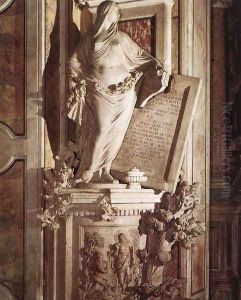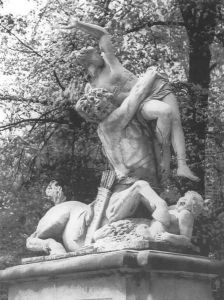Antonio Corradini Paintings
Antonio Corradini was a Venetian Rococo sculptor who became famous for his marble sculptures which are characterized by a delicate, almost ethereal treatment of surfaces and a skilled representation of draped figures. Born in 1688 in Venice, Italy, Corradini developed an interest in sculpture from an early age and trained with prominent artists in Venice.
In the early stages of his career, Corradini worked extensively in the Veneto region, where he contributed to the decoration of numerous churches and public buildings. His work was influenced by the Baroque style, but he gradually developed his own distinctive approach that anticipated the Rococo movement. Corradini's sculptures are particularly noted for their sensuous and graceful figures that convey a strong sense of movement and emotion.
By the 1720s, Corradini had gained considerable recognition and began to receive commissions from beyond the Venetian Republic. One of his most famous works is the 'Veiled Truth' (also known as 'Pudicitia'), a bust that exemplifies his mastery in carving marble to resemble soft, translucent veils. This piece, along with other similar works, demonstrates his fascination with the challenge of rendering the human figure partially obscured by thin drapery.
Corradini's talent eventually led him to work in Vienna, Prague, and Dresden, where he was involved in various projects, including the design of mausoleums and monuments for the European aristocracy. His international success helped to spread his reputation across Europe, and he became one of the most sought-after sculptors of his time.
Antonio Corradini passed away in 1752 in Naples, where he was working on a commission for the Cappella Sansevero. His legacy is defined by his innovative approach to marble sculpture, his ability to capture softness and texture in stone, and his influence on the generation of sculptors that followed. Although not as widely known as some of his contemporaries, Corradini's work remains a significant contribution to the development of 18th-century European art.

